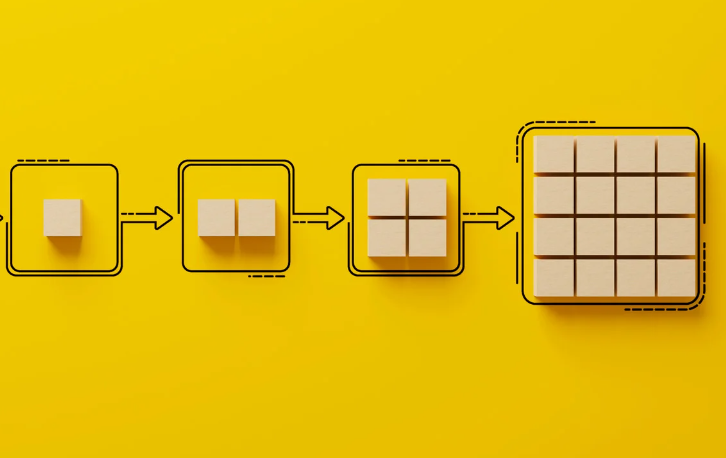Purchase Order vs. Bill of Sale: Understanding the Difference
Understand the distinct roles of purchase orders and bills of sale in business transactions to manage your financial records effectively
Tired of nonsense pricing of DocuSign?
Start taking digital signatures with BoloSign and save money.
In the world of business transactions and personal sales, two important documents often come into play: the purchase order and the bill of sale. While both serve crucial roles in facilitating transactions, they have distinct purposes and characteristics. This comprehensive guide will explore the nuances of purchase orders and bills of sale, helping you understand when and how to use each document effectively.
Introduction
When engaging in any transaction, whether for business or personal purposes, proper documentation is essential. Two common documents used in various transactions are purchase orders and bills of sale. While they may seem similar at first glance, these documents serve different purposes and are used at different stages of a transaction. Understanding the differences between them is crucial for both buyers and sellers to ensure smooth, legally sound transactions.
What is a Buyer's Order or Purchase Order?
A purchase order (PO) is a commercial document issued by a buyer to a seller, indicating the types, quantities, and agreed prices for products or services. It is used to control the purchasing of products and services from external suppliers and is an essential tool in business-to-business transactions.
Download a free Purchase Order template from BoloSign.

Key Features of a Purchase Order:

- Buyer-initiated: The buyer creates and sends the PO to the seller.
- Pre-transaction: It is typically issued before the goods or services are delivered.
- Commitment to buy: It represents the buyer's intent to purchase specific items or services.
- Detailed specifications: It includes precise descriptions, quantities, prices, and delivery terms.
- Reference number: Each PO has a unique identifier for tracking purposes.
Purchase orders serve several important functions in the business world. They help streamline the procurement process, provide a clear record of orders, and serve as a legal document that binds both parties to the agreed-upon terms.
What is a Buyer's Order for a Car?
In the context of automobile sales, a buyer's order is a specific type of purchase order used when purchasing a vehicle. It is a document that outlines the details of the car purchase, including the vehicle specifications, pricing, and any additional features or services included in the sale.
Elements of a Car Buyer's Order:

- Vehicle details: Make, model, year, VIN, color, and mileage.
- Pricing information: Base price, additional features, taxes, and fees.
- Trade-in details: If applicable, information about a trade-in vehicle.
- Financing terms: If the buyer is financing the purchase, details of the loan terms.
- Warranties and add-ons: Any extended warranties or additional services purchased.
A car buyer's order is typically created by the dealership and presented to the buyer for review and signature. It serves as a preliminary agreement before the final sale is completed.
The Importance of a Vehicle Purchase Agreement
A vehicle purchase agreement is a crucial document in any car sale transaction. It serves as a legally binding contract between the buyer and seller, outlining all the terms and conditions of the sale. This agreement protects both parties by clearly stating what is being sold, at what price, and under what conditions.
Key Benefits of a Vehicle Purchase Agreement:

- Legal protection: It provides a legal framework for the transaction, protecting both buyer and seller.
- Clarity of terms: It clearly outlines all aspects of the sale, reducing the risk of misunderstandings.
- Dispute resolution: In case of any disagreements, the agreement can be referred to for clarification.
- Compliance with regulations: It ensures that the sale adheres to local laws and regulations.
A well-drafted vehicle purchase agreement is essential for a smooth and legally sound transaction. It provides peace of mind to both parties and helps prevent potential disputes in the future.
What is a Bill of Sale?
A bill of sale is a legal document that records the transfer of ownership of an item from one party to another. It serves as a receipt and proof of purchase, typically used in private party transactions or for the sale of personal property.
Download a free Bill Of Sale template from BoloSign.

Key Features of a Bill of Sale:

- Seller-initiated: The seller usually prepares the bill of sale.
- Post-transaction: It is typically created at the time of or after the sale is completed.
- Proof of transfer: It documents that ownership has been transferred from seller to buyer.
- Basic information: It includes essential details about the item sold and the parties involved.
- Legal protection: It can serve as evidence in case of future disputes.
Bills of sale are commonly used for various types of transactions, including the sale of vehicles, boats, animals, and other personal property.
How Does a Bill of Sale Work?
A bill of sale functions as a record of a completed transaction. It typically includes the following information:

- Names and addresses of both the buyer and seller
- Description of the item being sold (e.g., make, model, serial number)
- Purchase price and date of sale
- Signatures of both parties
- Any specific conditions or warranties related to the sale
When a transaction is completed, the seller fills out the bill of sale with all relevant information and both parties sign it. The buyer usually keeps the original document, while the seller may keep a copy for their records.
The Key Differences Between a Bill of Sale and a Buyer's Order
While both documents are used in sales transactions, there are several key differences between a bill of sale and a buyer's order:
- Timing: A buyer's order is typically created before the transaction, while a bill of sale is created at the time of or after the sale.
- Initiator: A buyer's order is initiated by the buyer, whereas a bill of sale is usually prepared by the seller.
- Purpose: A buyer's order represents an intent to purchase, while a bill of sale records a completed transfer of ownership.
- Level of detail: A buyer's order often includes more detailed specifications and terms, especially in complex transactions. A bill of sale typically contains more basic information about the sale.
- Legal status: While both can be legally binding, a buyer's order is often considered a contract for future performance, while a bill of sale is proof of a completed transaction.
- Use in business: Buyer's orders are more commonly used in business-to-business transactions, while bills of sale are often used in private party sales or for personal property.
- Negotiation: The terms in a buyer's order may be negotiated before acceptance, while a bill of sale typically reflects the final, agreed-upon terms of a sale.
Understanding these differences is crucial for choosing the right document for your specific transaction needs.

Protecting Big Transactions with Buyer's Orders or Bills of Sale
For significant transactions, whether in business or personal contexts, it's crucial to have proper documentation. Both buyer's orders and bills of sale can play important roles in protecting the interests of all parties involved.
Using Buyer's Orders for Protection:
- Clear expectations: A detailed buyer's order ensures both parties understand exactly what is being purchased and under what terms.
- Price protection: Once a buyer's order is accepted, it can lock in the agreed-upon price.
- Delivery terms: It can specify delivery dates and methods, protecting the buyer from delays.
- Payment terms: Clear payment terms protect both buyer and seller.
- Legal recourse: In case of non-performance, the buyer's order provides a basis for legal action.
Using Bills of Sale for Protection:
- Ownership proof: A bill of sale serves as clear evidence of ownership transfer.
- Condition documentation: It can detail the condition of the item at the time of sale, protecting against future disputes.
- As-is sales: For items sold "as-is," a bill of sale can clearly state this, protecting the seller from future claims.
- Tax compliance: It provides a record for tax purposes, ensuring compliance with tax laws.
- Dispute resolution: In case of any post-sale disputes, the bill of sale serves as a key piece of evidence.
For maximum protection in large transactions, consider using both documents: a buyer's order to initiate the transaction and a bill of sale to finalize it.
BoloSign: E-Signature Platform for Small Businesses
In today's digital age, managing documents like purchase orders and bills of sale can be streamlined through electronic signature platforms. BoloSign is an e-signature solution specifically designed for small businesses, offering an efficient way to handle various types of agreements and documents.

Key Features of BoloSign:
User-friendly interface: Easy to navigate, even for those new to e-signature platforms.
Template library: Includes templates for common documents, including purchase orders and bills of sale.

Customization options: Allows users to create and save custom templates tailored to their business needs.
Secure signing process: Ensures the authenticity and integrity of signed documents.
Mobile Accessibility: With BoloSign, users can sign and manage documents from any device, providing flexibility and convenience for on-the-go professionals.

Cloud storage: Safely stores all signed documents for easy access and retrieval.
Integration capabilities: Can be integrated with other business tools for seamless workflow.

BoloSign for Purchase Orders and Bills of Sale
BoloSign provides templates for both purchase orders and bills of sale, making it easy for small businesses to create, send, and manage these crucial documents. The platform's features allow for:
Quick document creation: Using pre-made templates or customizing your own.
Real-time tracking: Monitor the status of your documents throughout the signing process.

Legal compliance: Ensures that e-signed documents meet legal requirements.
Easy distribution: Send documents to all parties for signature with just a few clicks.
Audit trails: Maintains a detailed log of all actions taken on a document.

By using BoloSign, small businesses can streamline their document processes, reduce paperwork, and ensure that all their purchase orders and bills of sale are properly executed and stored.
Try BoloSign's 7-Day Free Trial
To experience the benefits of BoloSign firsthand, the platform offers a 7-day free trial. This trial period allows small business owners to:
- Explore the platform's features
- Test the template library, including purchase order and bill of sale templates
- Experience the ease of creating and sending documents for signature
- Evaluate how BoloSign can improve their document management processes
To start your free trial, visit BoloSign's website and sign up for the 7-day trial offer. It's an excellent opportunity to see how an e-signature platform can simplify your business operations and document management.
FAQs
Is a purchase order legally binding?
Yes, once accepted by the seller, a purchase order becomes a legally binding contract.
Do I need a bill of sale for every transaction?
While not always legally required, a bill of sale is recommended for significant purchases or sales, especially for items like vehicles or expensive equipment.
Can a bill of sale be handwritten?
Yes, a bill of sale can be handwritten, but typed documents are generally preferred for clarity and professionalism.
What's the difference between a purchase order and an invoice?
A purchase order is issued by the buyer before the transaction, while an invoice is issued by the seller after goods or services have been delivered.
Is a buyer's order the same as a purchase agreement?
While similar, a buyer's order is typically less detailed than a full purchase agreement. In some cases, a buyer's order can serve as a purchase agreement.
Can I use an e-signature for purchase orders and bills of sale?
Yes, e-signatures are generally legally valid for these documents. Platforms like BoloSign make this process easy and secure.
How long should I keep a bill of sale?
It's recommended to keep a bill of sale for at least the duration of your ownership of the item, and potentially longer for tax purposes.
Conclusion
Understanding the differences between purchase orders and bills of sale is crucial for anyone involved in business transactions or significant personal sales. While both documents play important roles, they serve different purposes and are used at different stages of a transaction. Purchase orders, including buyer's orders for car purchases, are essential for initiating transactions, clearly stating the buyer's intent and the terms of the purchase.
They provide a framework for the transaction and help prevent misunderstandings between buyers and sellers. Bills of sale, on the other hand, serve as proof of a completed transaction, documenting the transfer of ownership from seller to buyer. They are particularly important for personal property sales and can provide legal protection for both parties. In today's digital age, managing these documents has become easier with e-signature platforms like BoloSign.
By offering templates, secure signing processes, and easy document management, BoloSign helps small businesses streamline their operations and ensure that all their important documents are properly executed and stored.
Take the first step towards better legal safeguarding by visiting BoloSign today and exploring our suite of tools designed to support your business’s legal needs.

Paresh Deshmukh
Co-Founder, BoloForms
31 Jan, 2025
Take a Look at Our Featured Articles
These articles will guide you on how to simplify office work, boost your efficiency, and concentrate on expanding your business.


